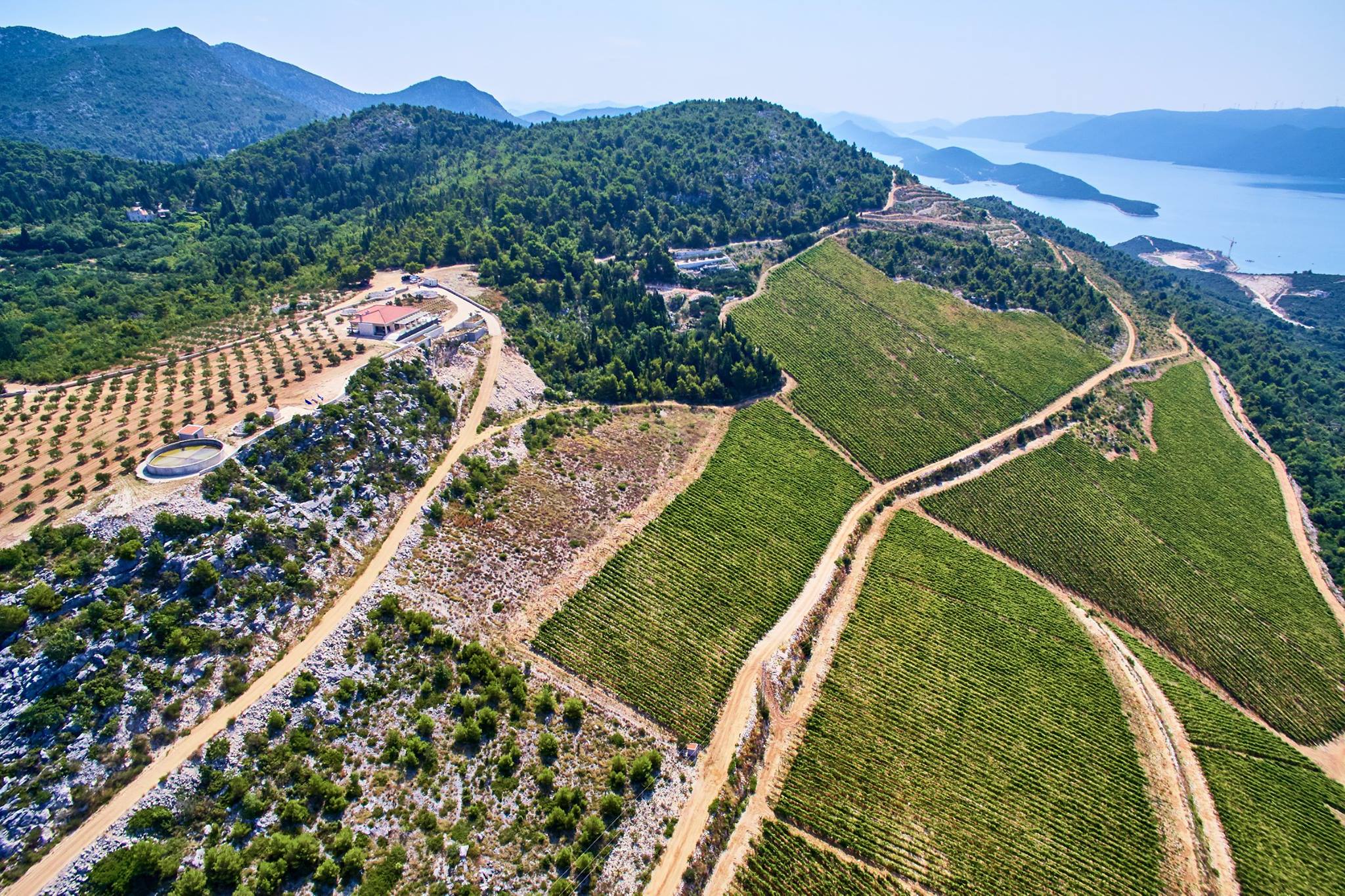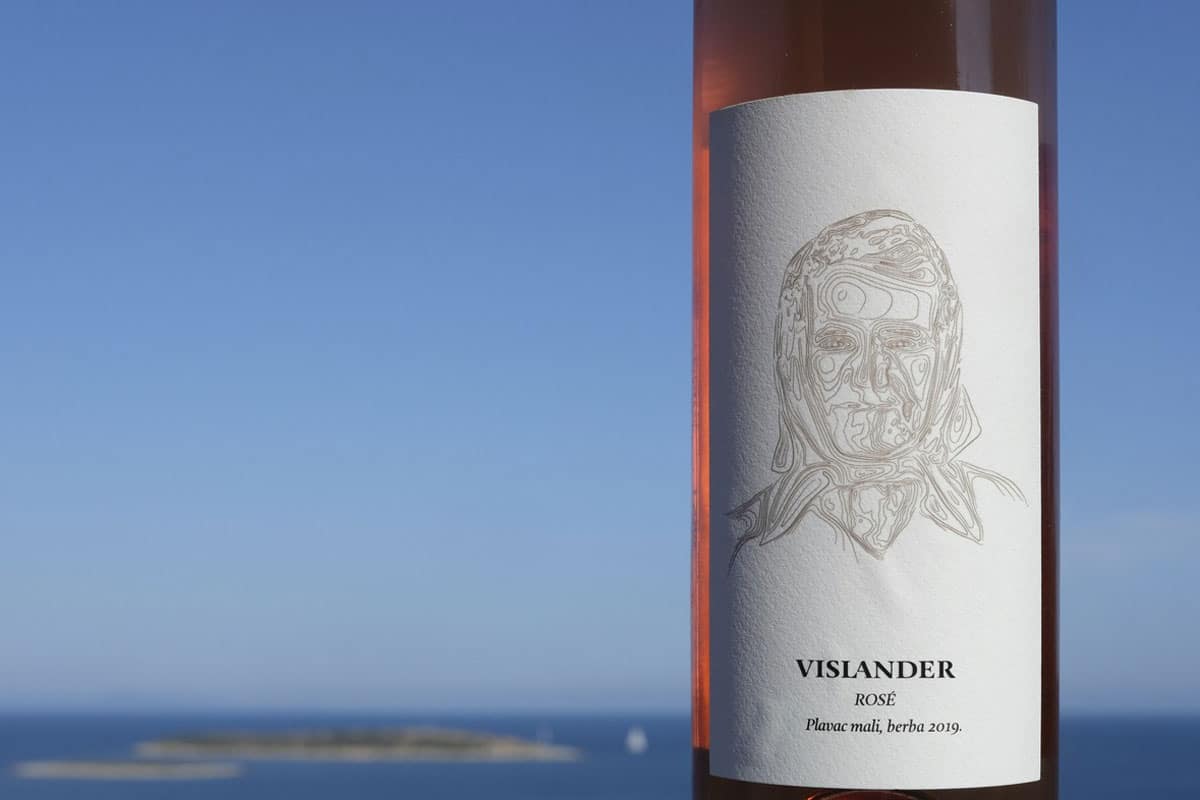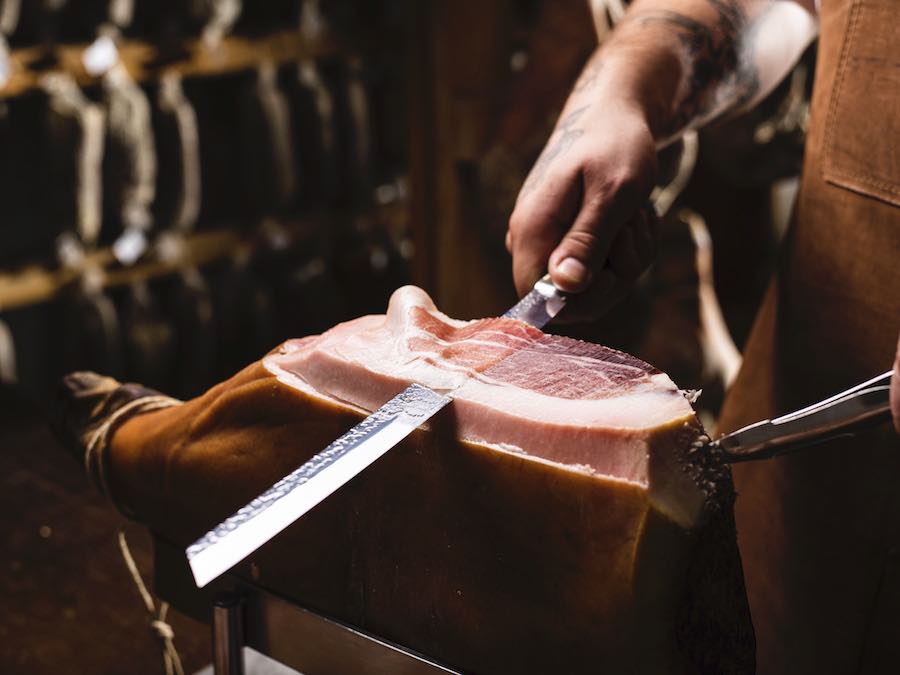Plavac Mali Rose Wines – Explore the Richness
 Wine lovers often search for that perfect bottle that brings a new taste experience. Discovering the right rose wine, especially one with a unique flavor profile, should be addressed in that pursuit.
Wine lovers often search for that perfect bottle that brings a new taste experience. Discovering the right rose wine, especially one with a unique flavor profile, should be addressed in that pursuit.
Plavac Mali rosé stands out in this quest, offering something different from the usual wines on the shelf. Plavac Mali can express various styles as well. There are even the Provancal-style light fragrant pink sippers, although Plavac Mali is known for its unique character that also achieves unique rose wine.
This article will explore the richness of Croatian rose wine made from the Plavac Mali grape—a close relative to zinfandel and an important part of Croatia’s viniculture heritage.
Learn about its key characteristics, typical flavors, and how best to enjoy it with food or special occasions. By understanding what makes Plavac Mali rosé so special, you’ll soon add it to your list of favorites.
Get Ready to Discover your new favourite – Plavac Mali Rosé
Exploring Plavac Mali Rosé opens a door to the vibrant world of Croatian wines. This journey reveals how winemakers combine traditions and modern vinification methods, creating unique tastes in every bottle.

Key Characteristics of Plavac Mali Rosé
Plavac Mali Rosé stands out due to its unique blend and properties. For instance, several producers combine varieties such as Syrah, or Cabernet, with Plavac Mali. This mix results in a wine that has an alcohol content of 12-13 %, keeping the sugar low below 2 g/L and maintaining a balanced pH.
Its acidity level sits comfortably between 5 and 6 g/L, making it crisp yet not too sharp.
However, Plavac Mali grapes are known for their robustness, tannin structure, and powerful aromatics. When 100% Plavac Mali is used for making rose wine, it’s not natural to achieve a light-bodied pale rose.
Traditional Plavac Mali rose will have higher alcohol and lower acidity. But it will carry the unique aromatic expression of the grape. Fruit will be less dominant and not in the red berries spectrum. It will be much more herbal and serious.
It can still have the necessary balance and drinkability. The perfect example is Stagnum Rose from the Miloš family winery on the Pelješac peninsula.
The Plavac Mali Rosé can be versatile, often found as dry but sometimes available in semi-dry or (rarely) sweet forms, with dry being the most prevalent style among Croatian wines on the Dalmatian coast.
Some winemakers even favor oak barrels for aging traditional types of rosé, enhancing its flavor profile which includes hints of carob, figs, sage, dark cherries, pepper, and spices for those who enjoy depth in their glass.
Ideal serving suggestions recommend enjoying this wine slightly chilled between temperatures of 10 to 12 degrees Celsius (50 to 54 °F) alongside lighter appetizers for an optimal tasting experience.
Typical Flavor Profile of Plavac Mali Rosé
Plavac Mali Rosé wines capture the essence of Dalmatia with their unique flavor profile. These wines blend the boldness of red wine grapes with the freshness of white wine techniques, creating a delightful rosé.
Imagine sipping on a glass that bursts with flavors of carob, figs, and sage. Dark cherries follow soon after, introducing a fruity yet spicy note to your palate. Pepper and spices round off the taste, adding depth and complexity to each sip.
This rosé variant benefits from both vineyard location and winemaking craftsmanship across Croatia’s coastline.
It is both appreciated in the so-called Provencal style with strawberry and raspberry fruit-forward profile and as a more traditional expression that tends to be more ripe and complex. That doesn’t mean you won’t enjoy the fruitiness of a rose, only that it will appear more delicate at first, like pomegranate or watermelon infused with some herbal nuances.
In any case, a glass of Plavac Mali Rosé is like a gentle breeze from the Croatian coastline – refreshing, aromatic, and full of character. 
Exploring Finest Examples
To truly appreciate the depth of Plavac Mali Rosé, one must sample its most renowned bottles. Each vineyard offers a unique taste that highlights the grape’s versatility and rich heritage so let’s explore a few key apellations.
Rose from Komarna

Komarna appellation proves to be a great terroir for Plavac Mali wines. Many wineries there are embracing the modem winemaking creating wines that appeal to traditionalists and “unburdened crowds” alike.
It is an often-heard phrase, to combine the tradition with modern winemaking, but in many cases, it is justified on Komarna.
Most wineries here achieve the unique inherent character and aromatic expression in a modern seek-out style of refreshing rose wine.
The best way to achieve a summer sipper rose is notably by blending Plavac Mali with other red grapes grown in the area.
That way, many achieve the desired balance for a dry, crisp rosé, giving it unique flavors.
No less important is the lower alcohol content and sugar level with refreshing acidity. It hits the perfect balance for those who enjoy their drink with vibrancy and freshness.
Such rose boasts red fruit aromas that charm your senses before you even take a sip. Most experts suggest pairing this wine with light appetizers and enjoying it chilled between 10 to 12 degrees to fully appreciate its bouquet.
The price range for such bottles never exceeds the price point to make it inaccessible to most wine lovers’ budgets.
Rose from Vis Island

Here, it is still possible to find the traditional 100% Plavac Mali rose, with lower acidity but plenty of body and intoxicating flavors.
Even modern wineries, such as Vislander, hold onto the tradition of making 100% Plavac Mali Rose.
Interestingly, Vislander showcases that it is possible to make a Plavac Mali Rose that is light on the tongue and fresh to the senses.
With an alcohol content of 12.5-13%, a sugar concentration at a low 1.8 g/L, and a pH balanced at 3.38, it represents the island’s dedication to quality winemaking.
The fruity aroma teems with fresh cranberries, pomegranate, and whispers of herbal notes, making it a perfect companion for lighter appetizers or simple gatherings among friends. Served best between temperatures of 10 to 12 degrees Celsius (50 to 54 °F), this wine captures the essence of Vis Island’s terroir while offering an accessible experience for all who taste it.
This is truly indulging in an experience rooted in the rich Croatian viticultural heritage.
The journey through Plavac Mali Rosé wines next takes us beyond Vis to explore other notable regions cultivating these remarkable wines.
Guide to Pairing Plavac Mali Rosé
Choosing the right dishes to pair with Plavac Mali Rosé will elevate your experience. Let’s see which foods bring out the best in this wine’s unique flavors.
Best Food Pairings for Plavac Mali Rosé

- Grilled Seafood: The wine’s notes of dark cherries and spices complement the smoky taste of grilled fish or shrimp.
- Fresh Sashimi: Its low sugar content and balanced acidity make it an ideal companion for delicate raw fish.
- Cheese Platters: Pair with soft cheeses like mozzarella or brie to balance the sage and pepper notes in the wine.
- Summer Salads: Light salads with vinaigrette dressing bring out the crispness of Plavac Mali Rosé.
- Fruit Plates: The subtle sweetness of figs in the wine matches well with fresh fruits, especially berries.
- Prosciutto: This is the traditional pairing, often encompassing the more robust interpretation of Plavac mali Rose associated with longer-aged and heavier smoked prosciutto.
- Herb-infused Chicken Dishes: Herby chicken complements the carob and sage aromas found in Plavac Mali Rosé.
- Mediterranean Appetizers: Enjoy olives, hummus, and flatbreads alongside this rosé for a refreshing combination.
Each pairing is chosen to highlight the unique characteristics of Plavac Mali Rosé, from its optimal ripeness to its intriguing flavor profile boasting cherries, pomegranate, but also carob, sage, pepper, and spices. Enjoy these combinations during special occasions or casual gatherings for an elevated dining experience.
Ideal Occasions for Enjoying Plavac Mali Rosé
Pairing the right food with Plavac Mali Rosé sets the stage for memorable experiences. Let’s turn our attention to the perfect moments to enjoy this vibrant wine. In this case, an old wisdom applies – do it like locals do!
- Summer Gatherings: This wine shines at outdoor summer events. Its refreshing nature pairs perfectly with the warmth and sunshine of the season, making it a hit at barbecues and picnics.
- Celebratory Toasts: Whether it’s a birthday, anniversary, or job promotion, Plavac Mali Rosé brings a touch of elegance without the formality of champagne. Raise a glass to mark these special occasions.
- Romantic Dinners: Opt for this rosé during date nights, especially when seafood is on the menu. Its balanced acidity complements dishes like shrimp and grilled fish, enhancing a romantic meal with its subtle complexity.
- Wine Tasting Parties: Host a Croatian-themed wine-tasting event and feature Plavac Mali Rosé as a star of the show. Guests will appreciate exploring its unique taste profile alongside other native varieties.
- Quiet Evenings Home: Sometimes, the best moment for a glass of wine is when you’re unwinding after a long day. Plavac Mali Rosé’s harmonious blend of flavors makes it an excellent companion for relaxation.
- Art and Culture Events: Bring along this rosé when attending open-air concerts or art gallery openings. Its cultured vibe matches well with creative and artistic atmospheres.
- Terraced Vineyard Visits: If traveling near Vis Island or Pelješac Peninsula vineyards where Plavac Mali grapes thrive, tasting this rosé on-site adds depth to your winery tour experience by connecting you directly with its terroir influence.
- Boat Trips and Beach Days: Elevate your seaside escapes with a bottle of Plavac Mali Rosé. The marine backdrop enhances its mineral notes while providing an unmatched toast to leisurely days spent on sea or sandy shores.
Conclusion
Exploring Plavac Mali Rosé invites wine lovers into a vivid journey through taste and aroma. Each bottle tells the story of its unique landscape, from Komarna’s sunny slopes to Vis Island’s ancient vineyards.
These rosé wines complement meals and celebrations perfectly, making any moment special. With affordable options available, there’s a Plavac Mali Rosé for every palate and occasion.
FAQs
1. What makes Plavac Mali Rosé wines unique?
Plavac Mali Rosé wines stand out because of their strong connection to the unique character of the Plavac Mali grape variety. Regardless of the style, these wines combine a rich history with the winegrowers’ expertise in Croatia, offering flavors that are both complex and delightful.
2. What kind of wine is Plavac?
Plavac Mali is an indigenous variety of Dalmatia and is very successful in making a powerful red wine. It is famous for its high tannins and lower acidity. Plavac Mali wines are often strong (higher alcohol) and full-bodied.
3. How do the climate and soil affect Plavac Mali Rosé wines?
The climate and soil in regions like Komarna or Vis Island play a crucial role in the cultivation of Plavac Mali grapes. The warm Mediterranean climate and rocky soil contribute to fully ripe grapes that create wines with intense flavors, high phenolic levels, and significant aging potential.
4. Can you pair food with Plavac Mali Rosé wines?
Absolutely! The dry nature of Plavac Mali Rosé, combined with its tannins and acidity, makes it an excellent companion for various foods. From seafood dishes to hearty meats softened by oak-aged richness, these wines complement a wide range of cuisines.
5. What is the aging potential of Plavac Mali Rosé wines?
Unlike many Rose wines made for one season only, Plavac Mali Rosé has an impressive ability to age well in the bottle due to its structure from tannins, acids, residual sugars, and sometimes even oak aging processes. This allows the wine to develop more complex flavors over time.
6. Are there different styles of Plavac Mali Rosé wine?
Yes! Wine producers experiment with grape skin contact time during fermentation leading to variations from light-bodied rosés perfect as a summer sipper to more full-bodied versions that showcase deeper colors and robust flavors suitable for colder months or alongside richer dishes.
Also, Plavac Mali can be picked a bit earlier, especially for RoseWinemakingg, or it could be vinified as a free-run juice from regular harvest.



















